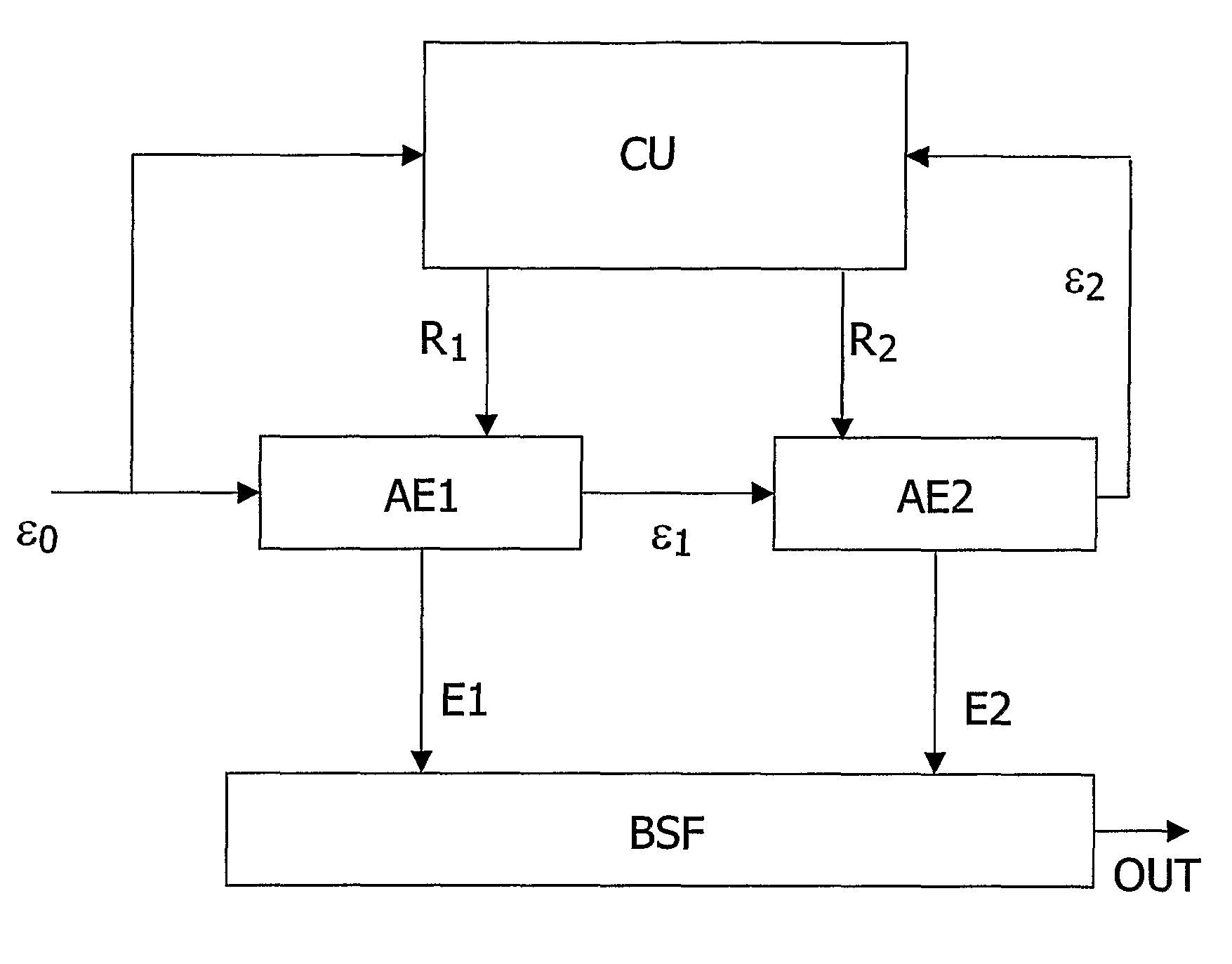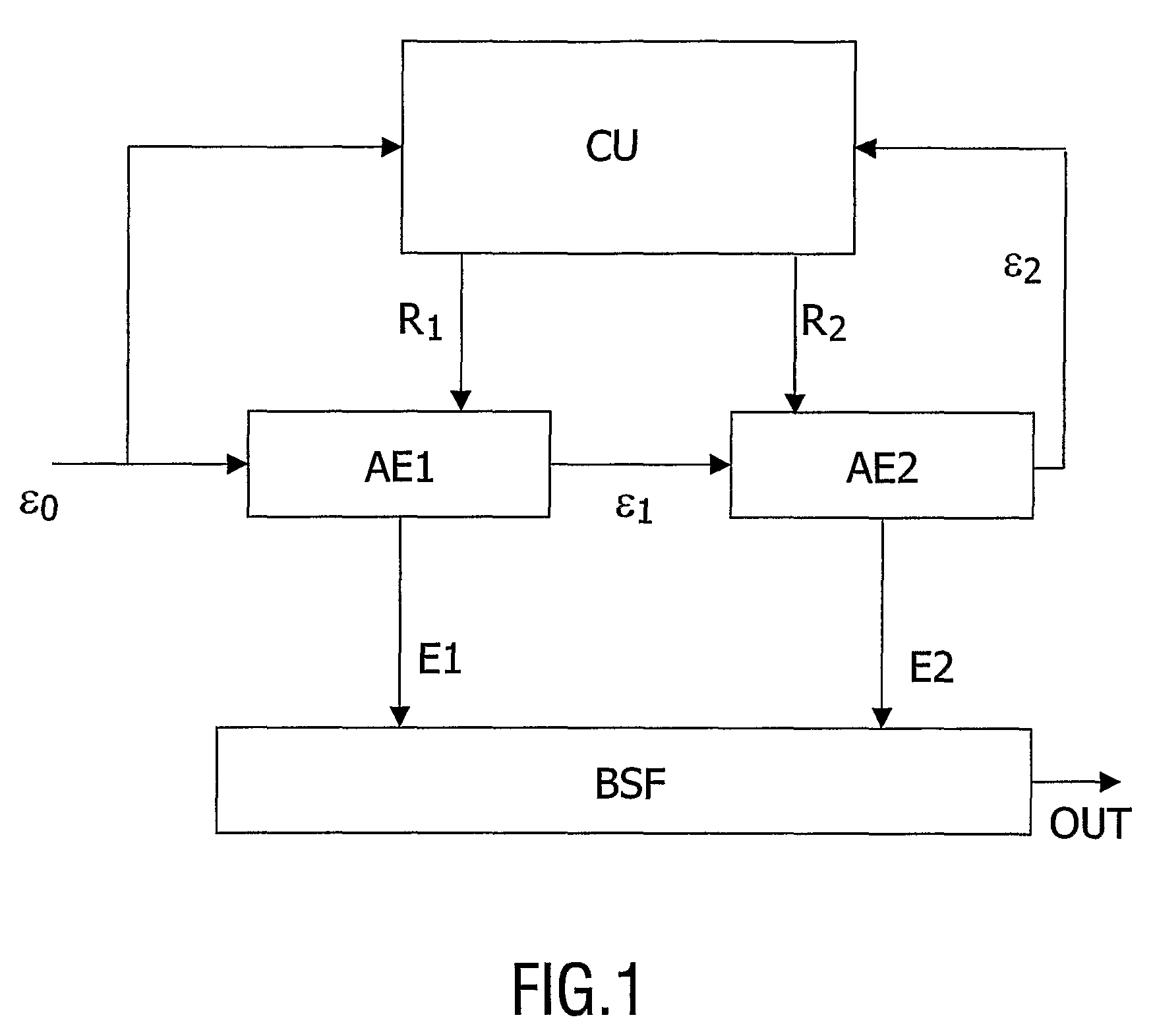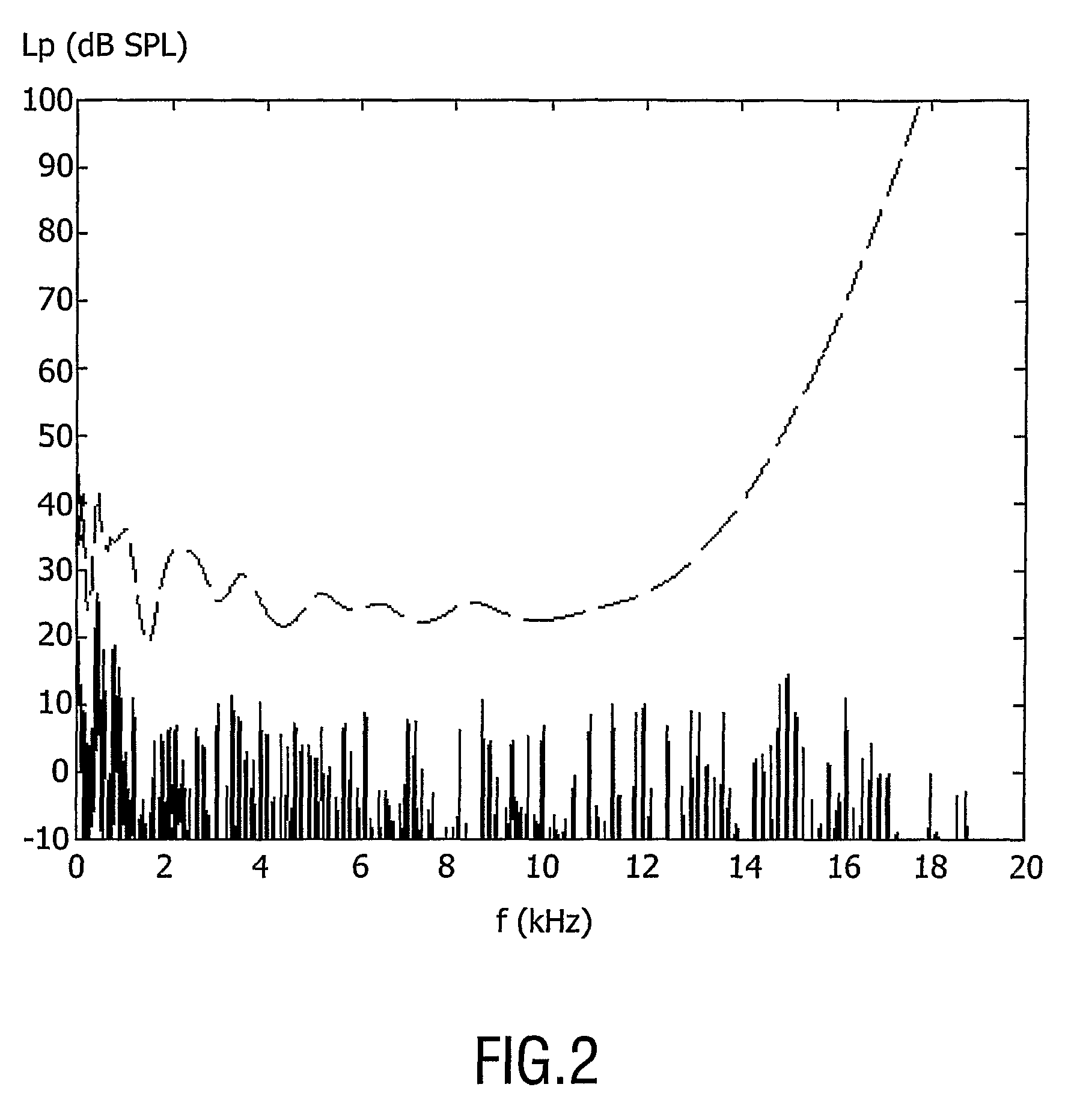Combined audio coding minimizing perceptual distortion
a combination audio and coding technology, applied in the field of high-quality low-bit rate audio signal coding, can solve the problems of poor performance, poor results in terms of bit rate or quality for certain excerpts of the signal, and no further specification is given to determine the distribution of bit rate between the different encoders, and achieves high efficiency
- Summary
- Abstract
- Description
- Claims
- Application Information
AI Technical Summary
Benefits of technology
Problems solved by technology
Method used
Image
Examples
Embodiment Construction
[0062]FIG. 1 is a block diagram illustrating the principles of a first, simple encoder embodiment comprising a cascade of two different encoders AE1, AE2 operating with a fixed total target bit rate per frame. A frame is defined as a time interval which is equal to or larger in duration than a single segment. The first encoder AE1 preferably comprises a sinusoidal encoder, while the second encoder AE2 comprises a transform encoder. The sinusoidal encoding method is efficient at low bit rates and provides a better sound quality compared to waveform encoders at comparably low bit rates. Transform encoders are known to be more bit rate demanding but reach a better sound quality than sinusoidal encoders. Thus, altogether, a combination provides a flexible audio encoder.
[0063]In the encoding scheme shown in FIG. 1, an excerpt of an audio signal ε0 is encoded by the first encoder AE1 using a certain proportion R1 of the target bit rate. The proportion of the bit rate R1 that can be spent ...
PUM
 Login to View More
Login to View More Abstract
Description
Claims
Application Information
 Login to View More
Login to View More - R&D
- Intellectual Property
- Life Sciences
- Materials
- Tech Scout
- Unparalleled Data Quality
- Higher Quality Content
- 60% Fewer Hallucinations
Browse by: Latest US Patents, China's latest patents, Technical Efficacy Thesaurus, Application Domain, Technology Topic, Popular Technical Reports.
© 2025 PatSnap. All rights reserved.Legal|Privacy policy|Modern Slavery Act Transparency Statement|Sitemap|About US| Contact US: help@patsnap.com



